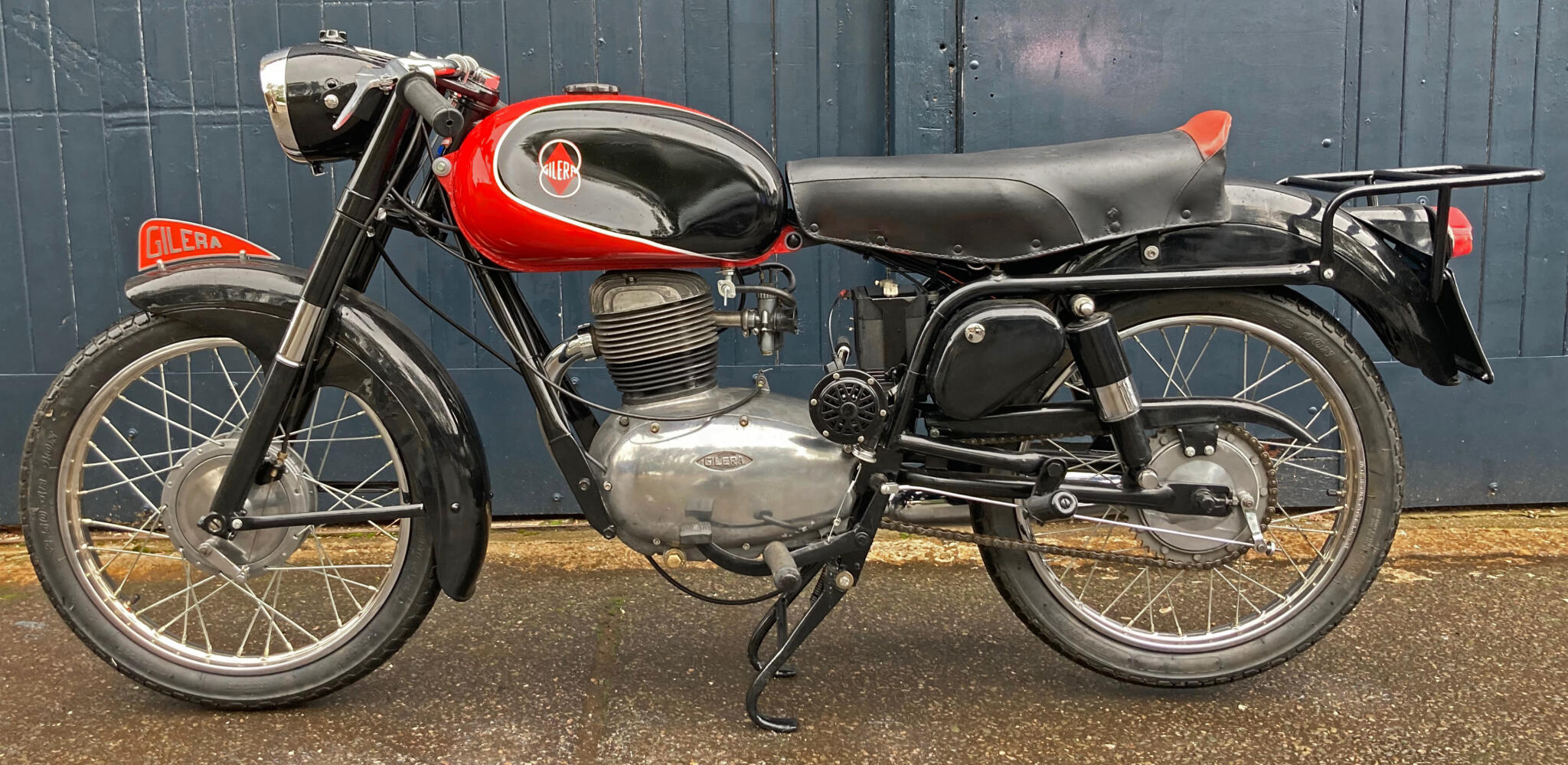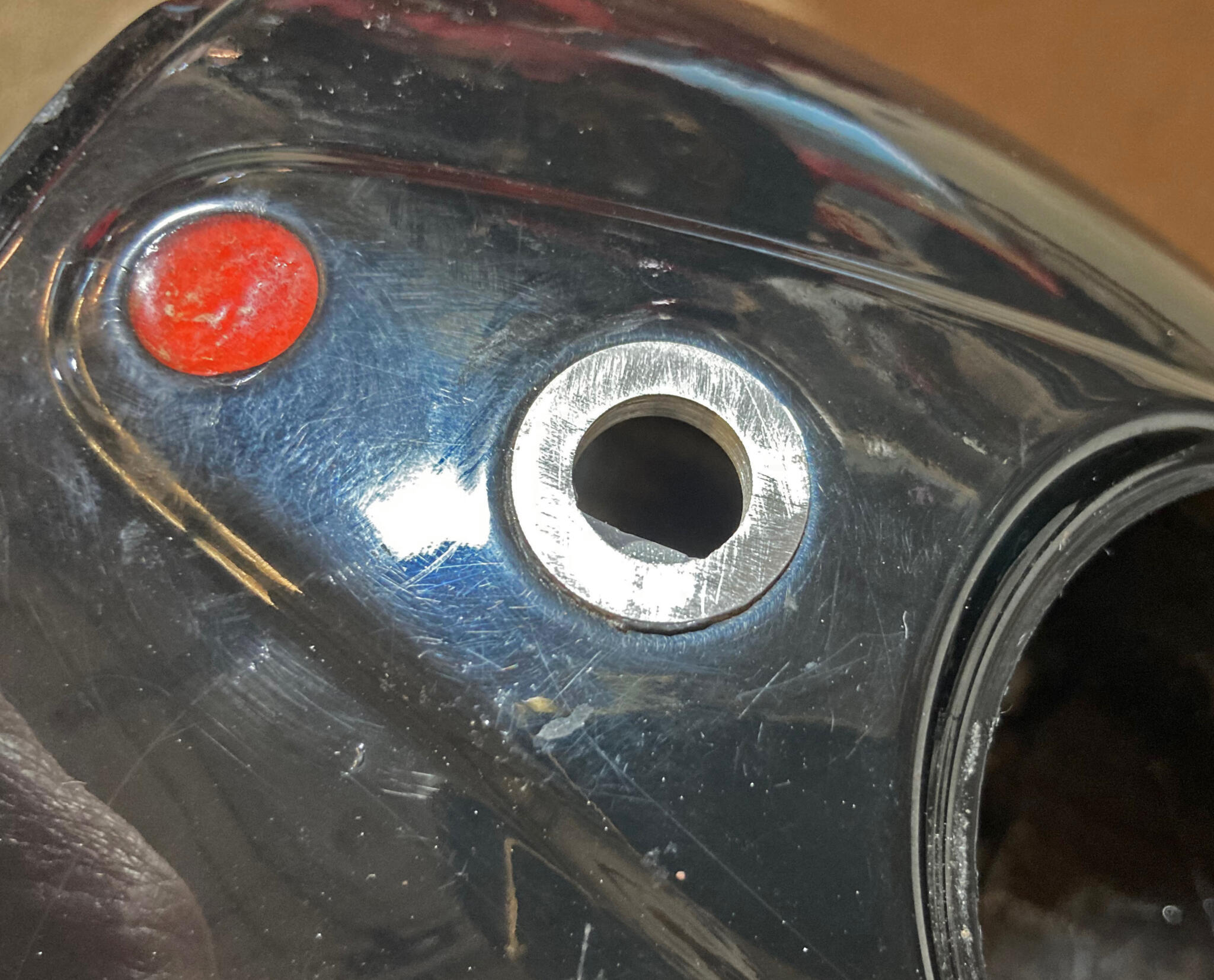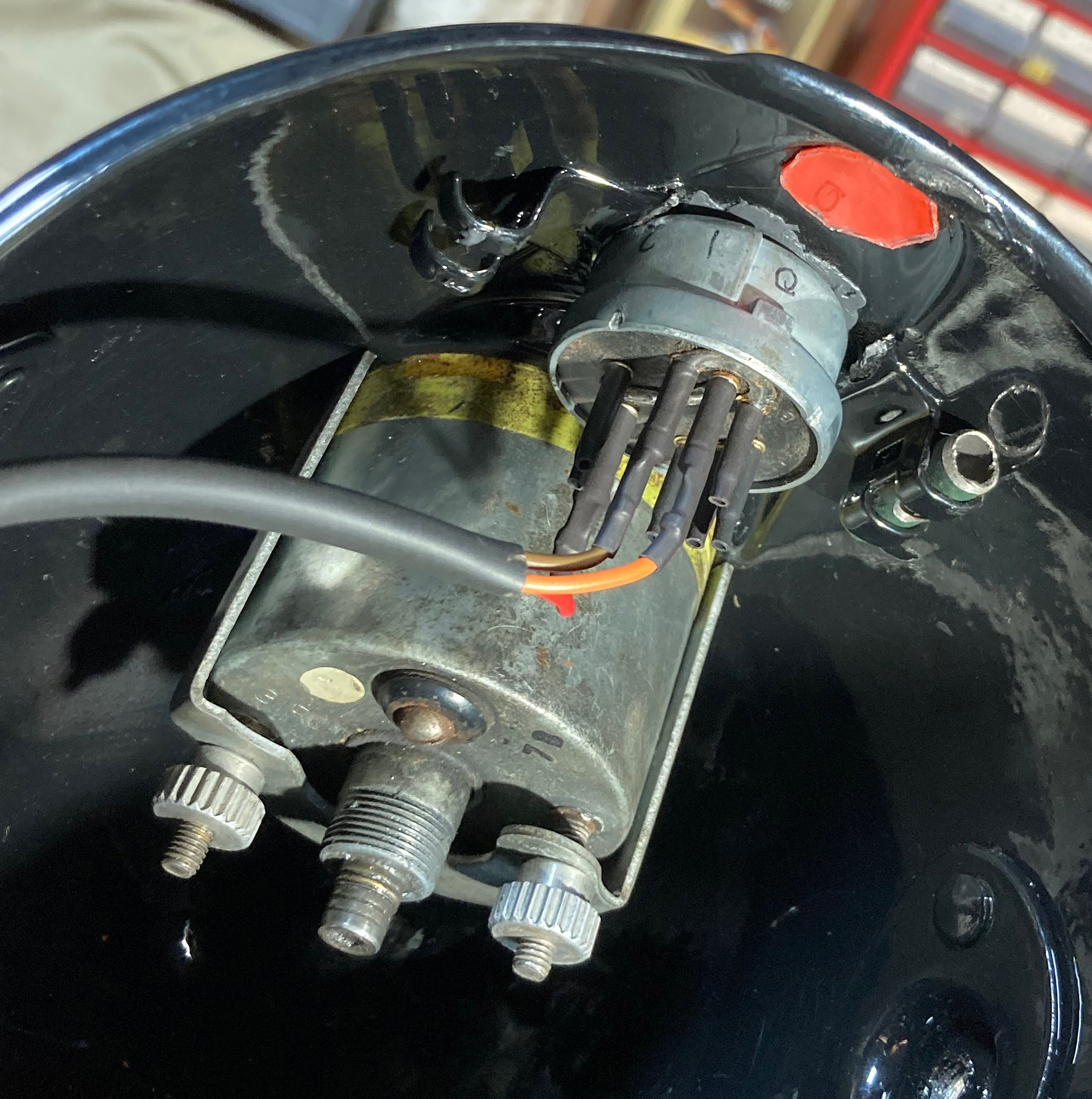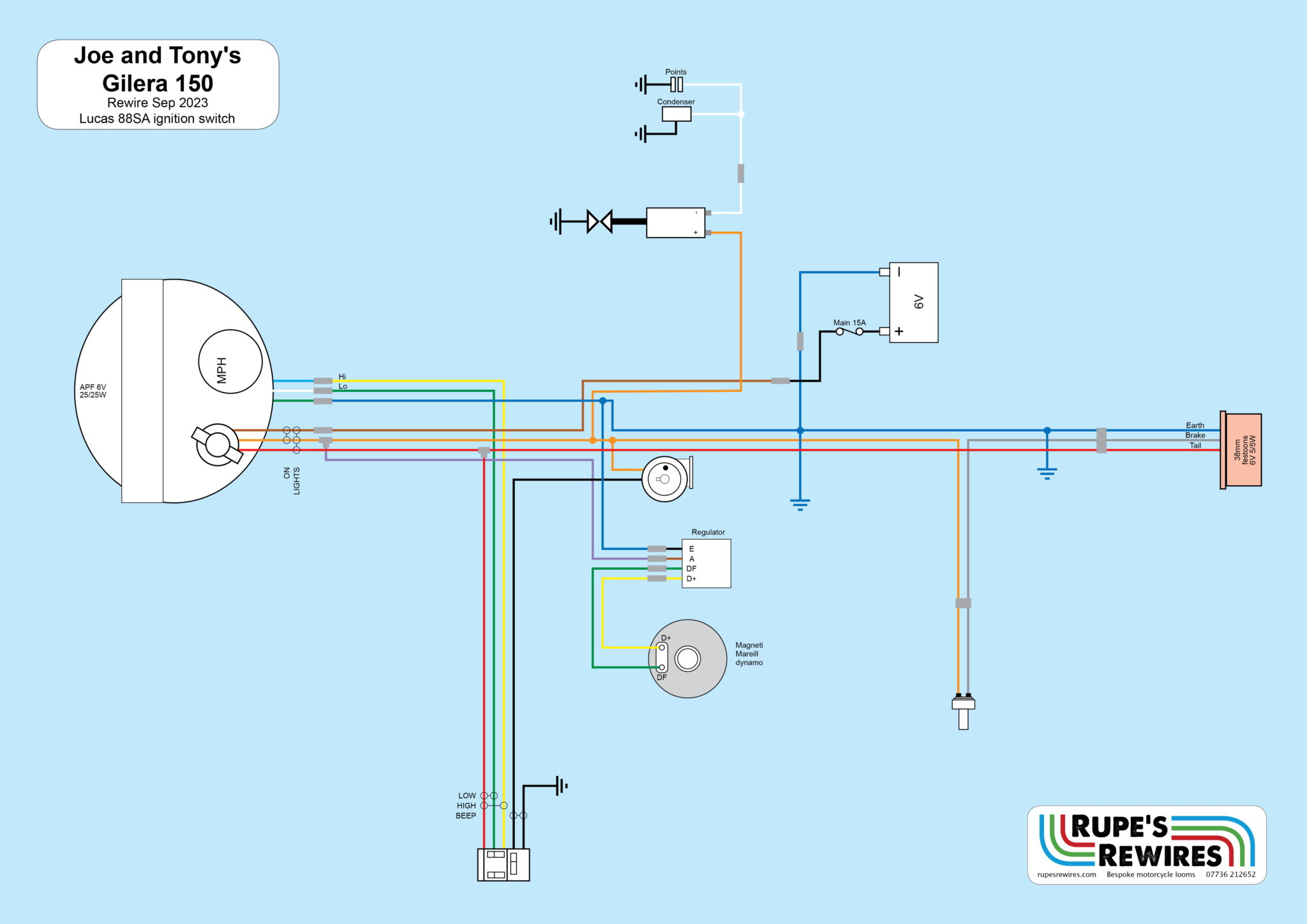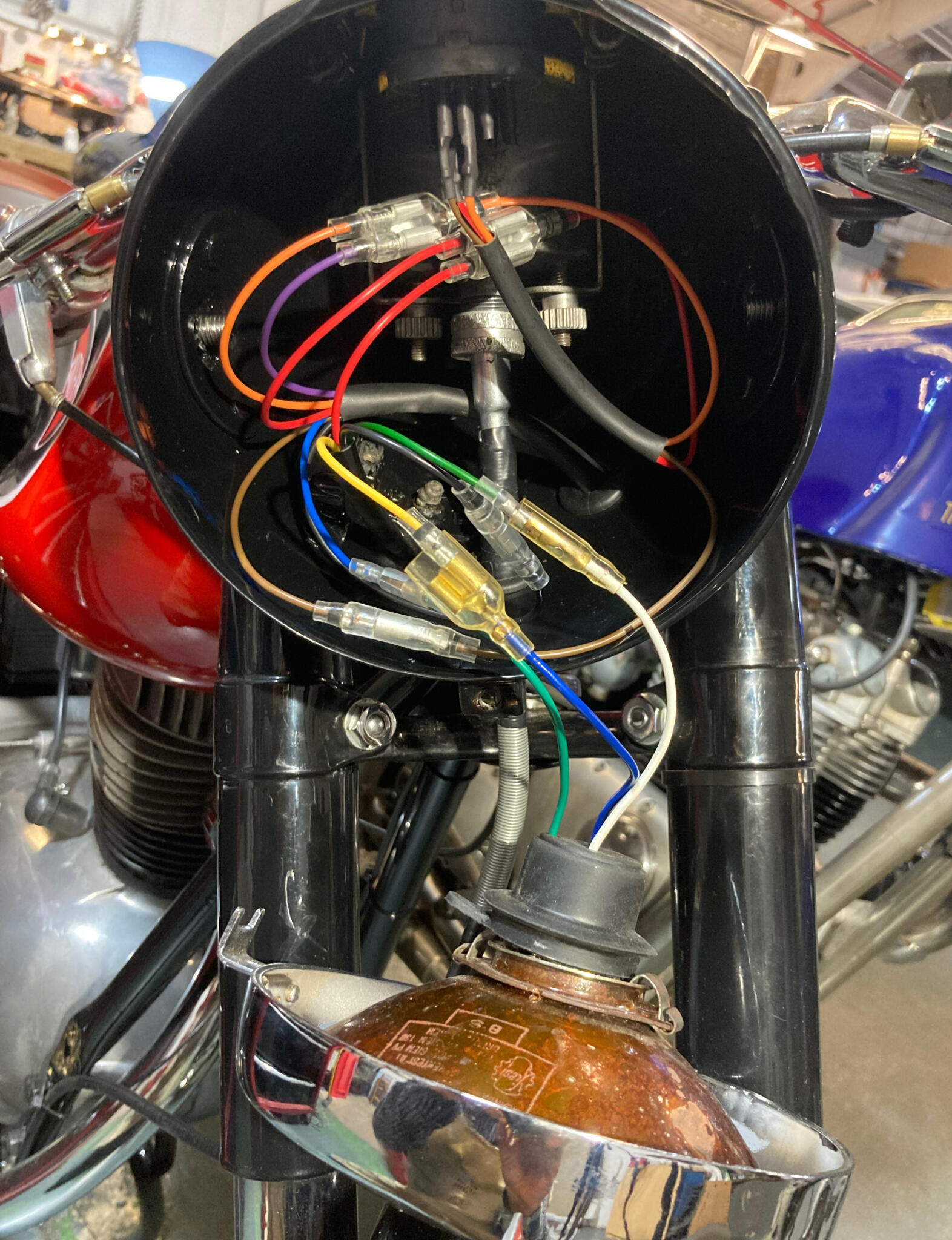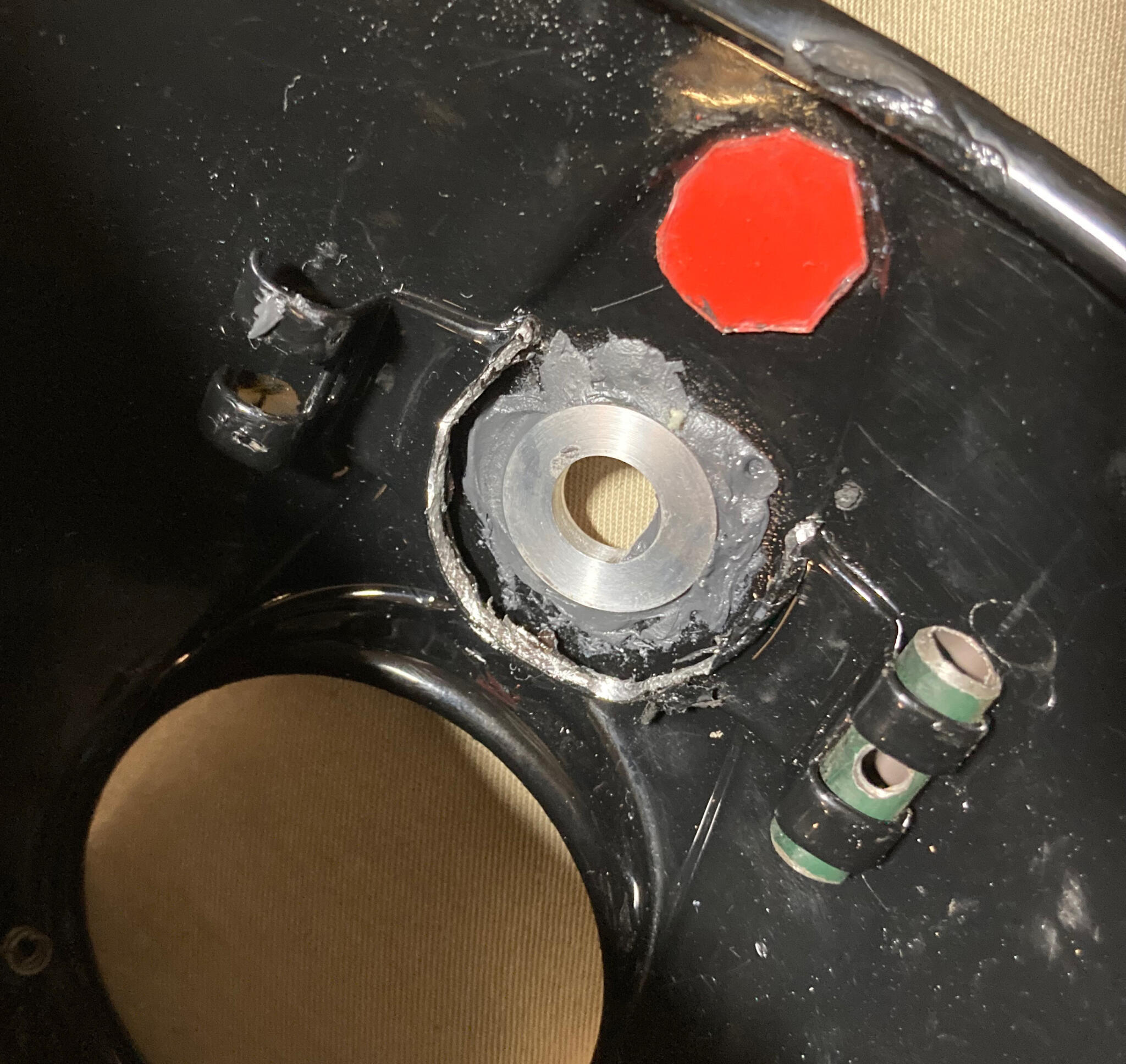
Here’s the inside of the headlight shell, with the original bracket ground away and the custom Lucas adaptor JB Welded in place
Tony’s Dad’s Gilera 150 Sport
A tiny bike, as simple as it gets. But this 1950s Italian masterpiece turned out to be quite tricky.
It belongs to Tony’s 80 year-old dad, who rode it as a young lad back in Italy. In fact, he took his wife (Tony’s mum) to hospital on it to give birth to his sister. Now Tony and brother-in-law Joe have decided to restore it and present it back to him – a beautiful idea.
Back in the 1950s, dynamos and six volt electrics were the norm. Tony was keen to keep the rather stylish lead acid battery, so although we could have gone to 12V we stayed at 6.
The puzzle came with the missing ignition switch. As usual for those days, it switched several things at once, using five different positions, but after poring over the wiring diagram in the manual I realised I could not tell what the switch connections were. I also couldn’t tell what the regulator wiring needed to be.
The simplest answer was to fit a solid state regulator, and find a period-looking switch to provide OFF, ON and ON+LIGHTS. A Lucas 88SA switch was the best match, and obligingly made the necessary connections. However, it didn’t fit the hole vacated by Gilera’s original switch. Cue an attack with a die grinder, and making up an adaptor ring to suit the Lucas switch. The result looked pretty convincing.
The headlight bulb and socket were missing too. Eventually I worked out it was an American Pre Focus fitting – APF for short. Some very early Japanese bikes used the same system. Fortunately you can still get the hardware as pattern parts.
It made sense to add a couple of other modifications: through-the-loom earths, and a fuse. Finally, we had lights, brake lights and a spark. But still the bike wouldn’t start. A check of the plug showed specks of rust, so it made sense to leave well alone until an engine strip could find out the cause.
1950s Italian lightweight bikes. Aren’t they beautiful?
